When we think of a vegan diet, often we envision an array of colorful vegetables, juicy fruits, and a plethora of grains and legumes. But can these plant-based wonders serve as a boon for diabetics? Let’s explore.
The Vegan-Diabetic Connection
In the vast landscape of dietary patterns, veganism has emerged as a choice for many, driven by concerns for health, the environment, and animal rights. Simultaneously, the world is seeing a rising prevalence of diabetes. This intersection of veganism and diabetes is becoming a focal point for many researchers, nutritionists, and individuals alike. But why? The answer lies in the inherent nature of vegan diets and their potential benefits for diabetics.
1. Nutrient Density: Vegan diets often emphasize whole, unprocessed foods such as fruits, vegetables, grains, nuts, and seeds. These foods pack a considerable nutritional punch. They’re dense in vitamins, minerals, and antioxidants, which can aid in overall health and wellness.
2. Weight Management: Obesity is a significant risk factor for Type 2 diabetes. Vegan diets, when followed in a balanced manner, can lead to weight loss and maintenance, primarily because of the reduced intake of saturated fats and calories.
3. Improved Insulin Sensitivity: Some studies suggest that a plant-based diet can enhance insulin sensitivity, making it easier for the body to manage blood sugar levels.
4. Lower Blood Sugar Levels: Vegan diets can lead to lower blood sugar levels both in the short and long term, reducing the need for insulin or other diabetic medications.
5. Reduced Risk of Related Complications: A vegan diet can reduce the risk of certain conditions associated with diabetes, such as heart diseases, thanks to the diet’s low saturated fat and high fiber content.
The Importance of Veganism for Diabetics
For those grappling with diabetes, every dietary choice can either be a step toward better health or a potential setback. Here’s why integrating veganism might be a noteworthy consideration:
1. Inflammation Reduction: Diabetes often accompanies inflammation. Vegan diets, rich in antioxidants from fruits and vegetables, can counteract this by reducing oxidative stress in the body.
2. Gut Health: A healthy gut can have positive implications for diabetics. Vegan diets, rich in fiber, promote a healthy gut microbiome, aiding digestion and potentially improving blood sugar management.
3. Elimination of Harmful Fats: Vegan diets inherently eliminate many sources of saturated and trans fats, primarily found in animal products. These fats can exacerbate insulin resistance in diabetics.
4. Ethical and Environmental Bonus: Beyond health, many diabetics find solace in the ethical stand of veganism. Knowing that their dietary choices are also benefiting the environment and reducing animal suffering can offer emotional and mental well-being.
5. Holistic Health Perspective: Embracing veganism can be a journey of not just managing blood sugar levels but achieving holistic health. By focusing on whole foods and plant-based nutrition, diabetics can also tackle issues like high cholesterol or high blood pressure, which often co-exist with diabetes.
In essence, while veganism is not a “cure” for diabetes, it offers a framework for healthier eating that can substantially benefit those managing this condition. As with any diet, it’s crucial to approach veganism with balance, ensuring all nutrient needs are met, and always consulting with a healthcare provider or nutritionist when considering significant dietary changes.
Recipe 1: Vegan Lentil Soup
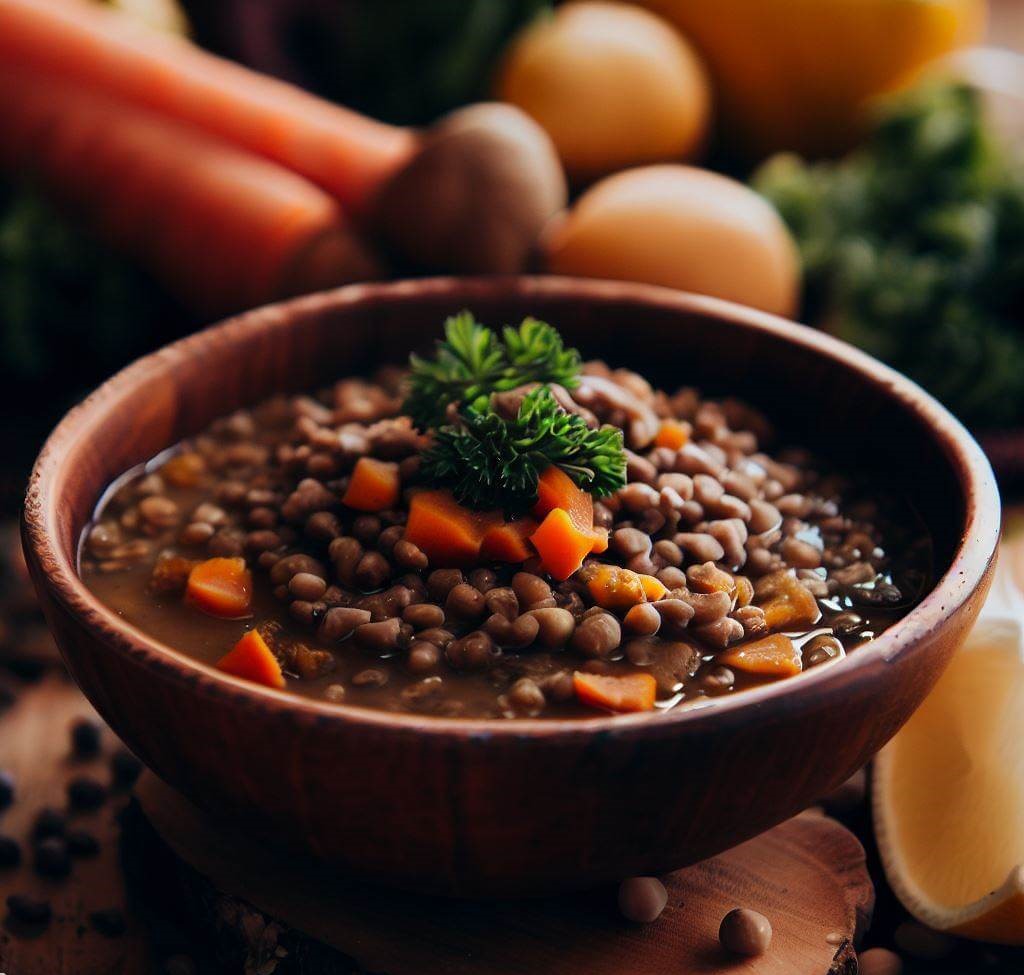
A Deep Dive: Lentils, the star of this dish, are renowned for their low glycemic index, making them an excellent choice for diabetics. They release energy slowly, preventing sudden spikes in blood sugar levels. Additionally, they’re a powerhouse of protein and fiber, ensuring satiety and aiding digestion.
Ingredients:
- Green or Brown Lentils (1 cup): These are rich in iron, folic acid, and B vitamins.
- Vegetable Broth (4 cups): A low-calorie base that adds flavor without the extra sodium.
- Garlic (2 cloves, minced): Known for its anti-inflammatory properties.
- Onion (1 medium, chopped): Packed with antioxidants and essential vitamins.
- Veggies of choice: Think carrots for vision, bell peppers for vitamin C, and zucchini for potassium.
- Salt and Pepper: To taste, but always moderate the salt for blood pressure management.
Method:
- In a large pot, sauté onions and garlic until translucent. This process releases the flavors, making the base aromatic.
- Add lentils, vegetables, and broth.
- Season with salt and pepper.
- Let it simmer on medium heat until the lentils are tender. Serve warm with a sprinkle of fresh herbs, if desired, like parsley or cilantro, which add a burst of freshness.
Recipe 2: Chickpea Stir-Fry
A Deep Dive: Chickpeas are not only delicious but are also a great source of protein, fiber, vitamins, and minerals. The high fiber content helps regulate blood sugar levels by promoting slower absorption of sugar.
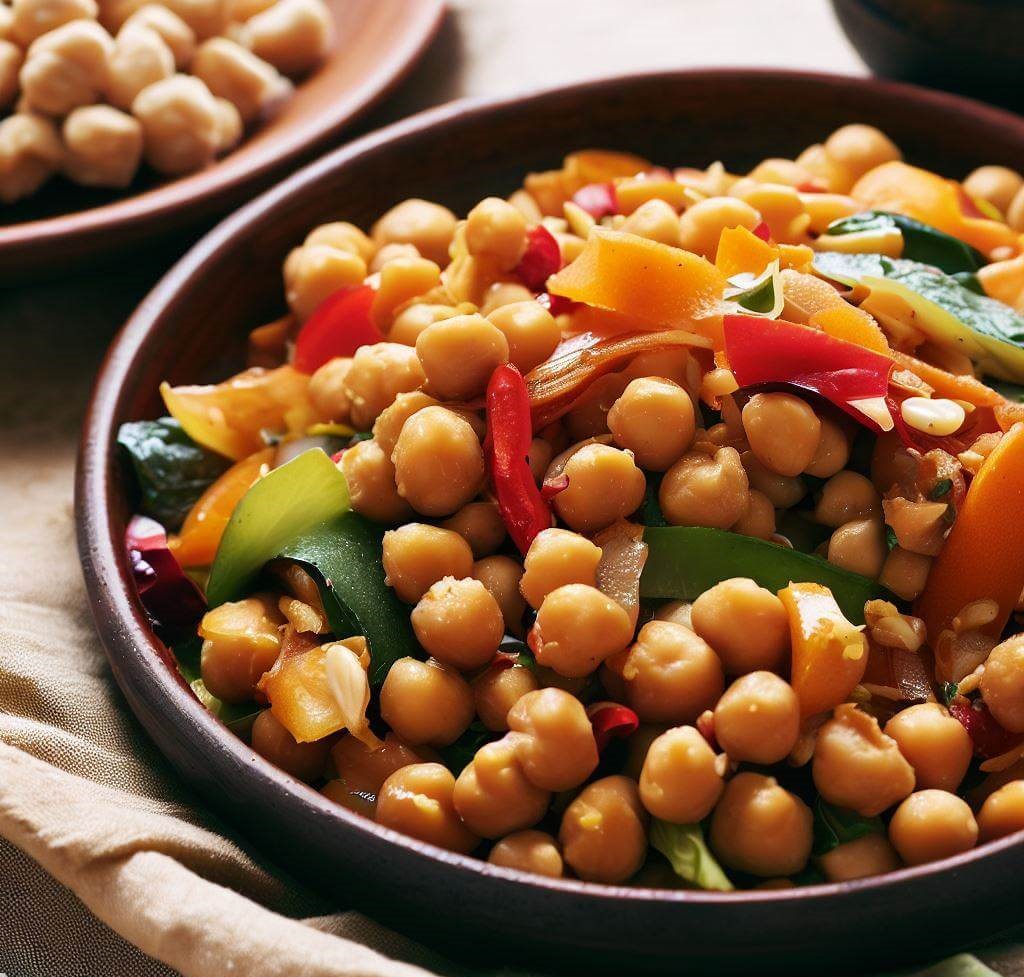
Ingredients:
- Boiled or Canned Chickpeas (2 cups): Ensure canned versions are free from added sugars and salts.
- Mixed vegetables: Broccoli is a powerhouse of vitamins K and C, snap peas bring in the crunch, and carrots are rich in beta-carotene.
- Reduced-sodium Soy Sauce or Tamari (2 tbsp): To add flavor without the high sodium content.
- Ginger and Garlic (a dash, finely chopped): Both are known to have medicinal properties, with ginger helping in blood sugar regulation.
Method:
- In a pan, lightly sauté ginger and garlic. The slight caramelization elevates the entire dish’s taste.
- Add chickpeas and veggies. Toss and turn for a vibrant mix.
- Drizzle with soy sauce or tamari. Combine well.
- Serve with a side of brown rice or quinoa, both excellent whole grain choices.
Recipe 3: Vegan Tofu Scramble
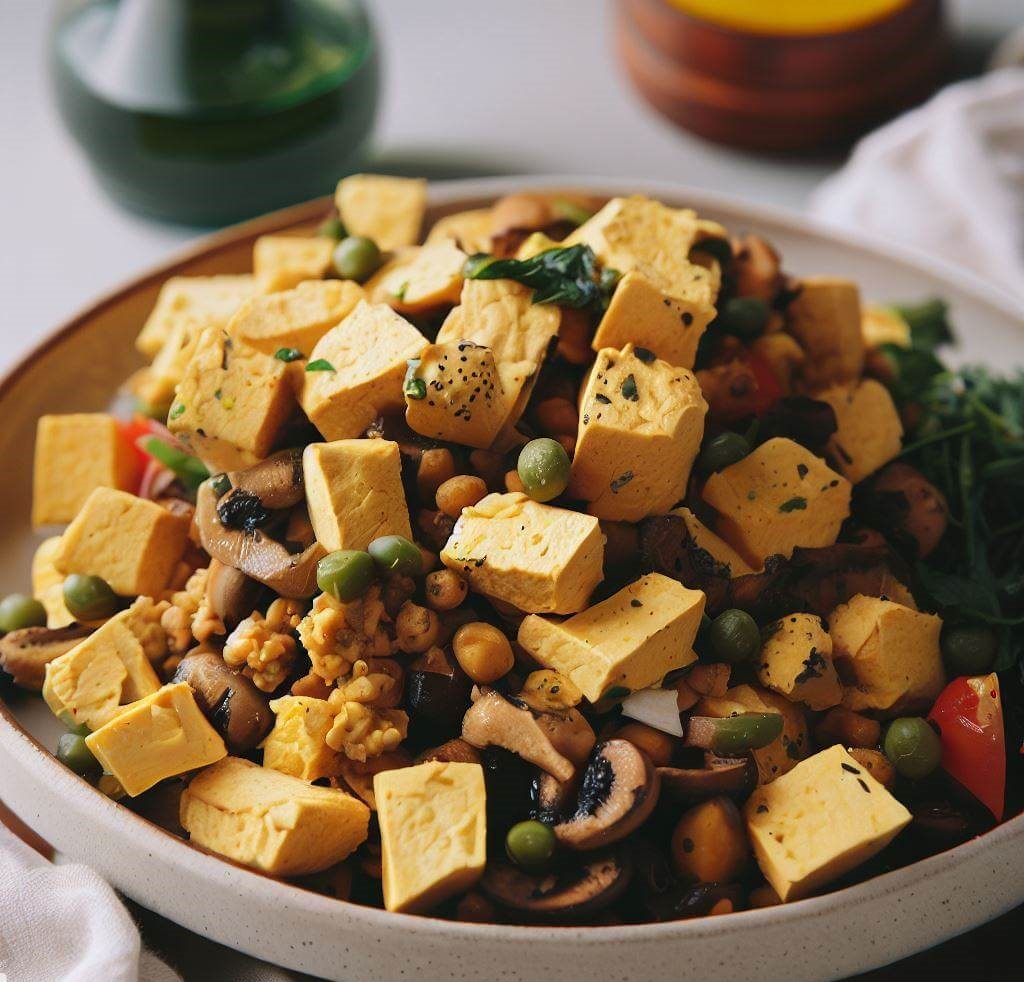
A Deep Dive: Tofu, made from soybean curds, is naturally gluten-free and low calorie. It contains no cholesterol and is an excellent source of protein, making it a fantastic choice for diabetics.
Ingredients:
- Firm Tofu (1 block): High in protein and contains all nine essential amino acids.
- Nutritional Yeast (1/4 cup): Adds a cheesy flavor without actual cheese. It’s a rich source of B vitamins.
- Turmeric (a pinch): Apart from giving a beautiful color, it’s known for its anti-inflammatory effects.
- Salt, Pepper, and Mixed Herbs: To taste, but keep the sodium in check.
- Vegetables: Bell peppers offer crunch and flavor, while spinach provides iron and calcium.
Method:
- Start by pressing the tofu to remove excess water. This ensures a better texture in your scramble.
- In a skillet, sauté the vegetables until they’re slightly soft.
- Add the crumbled tofu. Mix well.
- Season with nutritional yeast, turmeric, and other spices.
- Cook until the tofu absorbs all flavors and turns slightly golden. Serve with avocado slices for a dose of healthy fats.
Recipe 4: Vegan Zucchini Noodles with Pesto
A Deep Dive: Zucchini noodles, also known as “zoodles”, are a fantastic low-carb alternative to pasta. Paired with a nutrient-rich pesto, this dish delivers taste without spiking blood sugar levels.
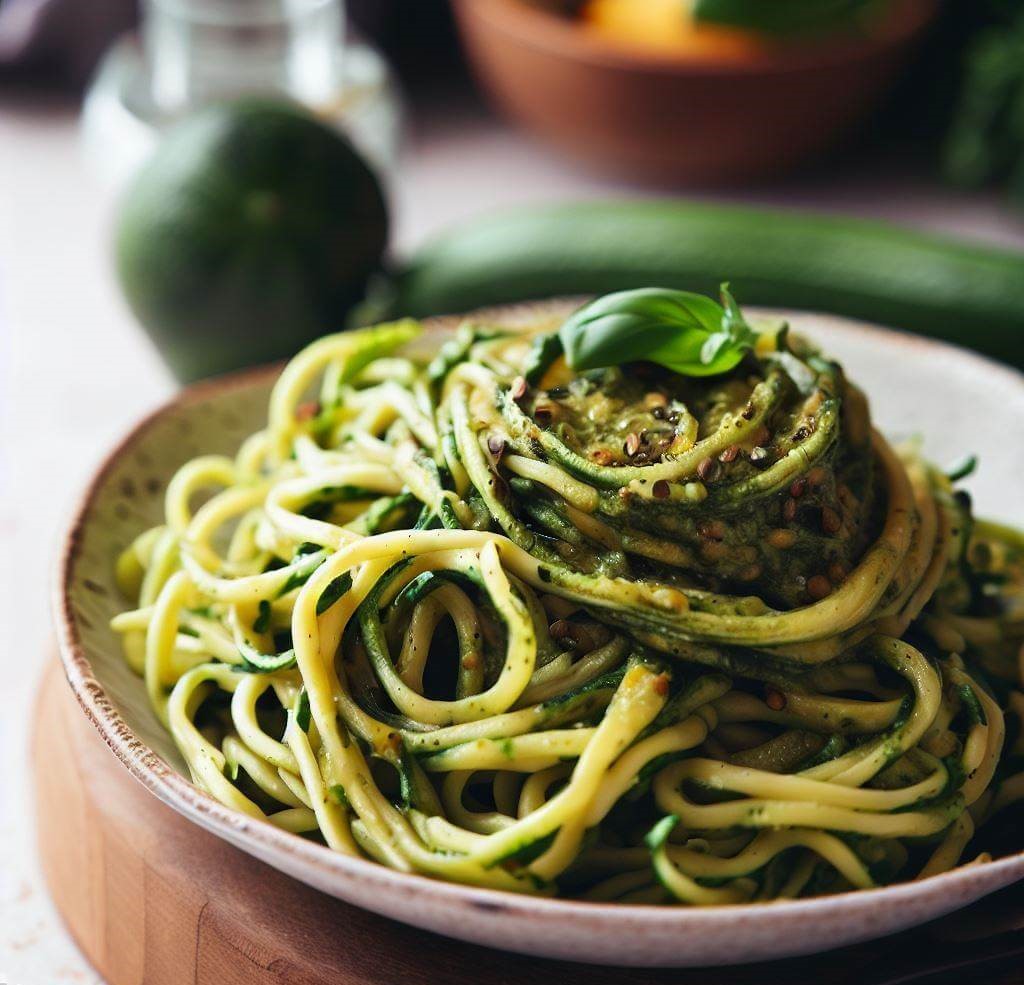
Ingredients:
- Zucchini (2 large): Spiralized into noodles.
- Homemade Pesto: Blend fresh basil, garlic, pine nuts, nutritional yeast (for a cheesy flavor), olive oil, and a splash of lemon juice.
- Cherry Tomatoes (1 cup): Halved. They add a burst of flavor and are packed with antioxidants.
- Olive Oil: A drizzle for sautéing.
- Salt and Pepper: To taste.
Method:
- Heat olive oil in a pan and toss in the zoodles, cooking just until slightly tender.
- Stir in the pesto, ensuring the zoodles are well-coated.
- Add cherry tomatoes last to maintain their freshness.
- Season with salt and pepper. Serve immediately.
Recipe 5: Vegan Quinoa and Black Bean Bowl
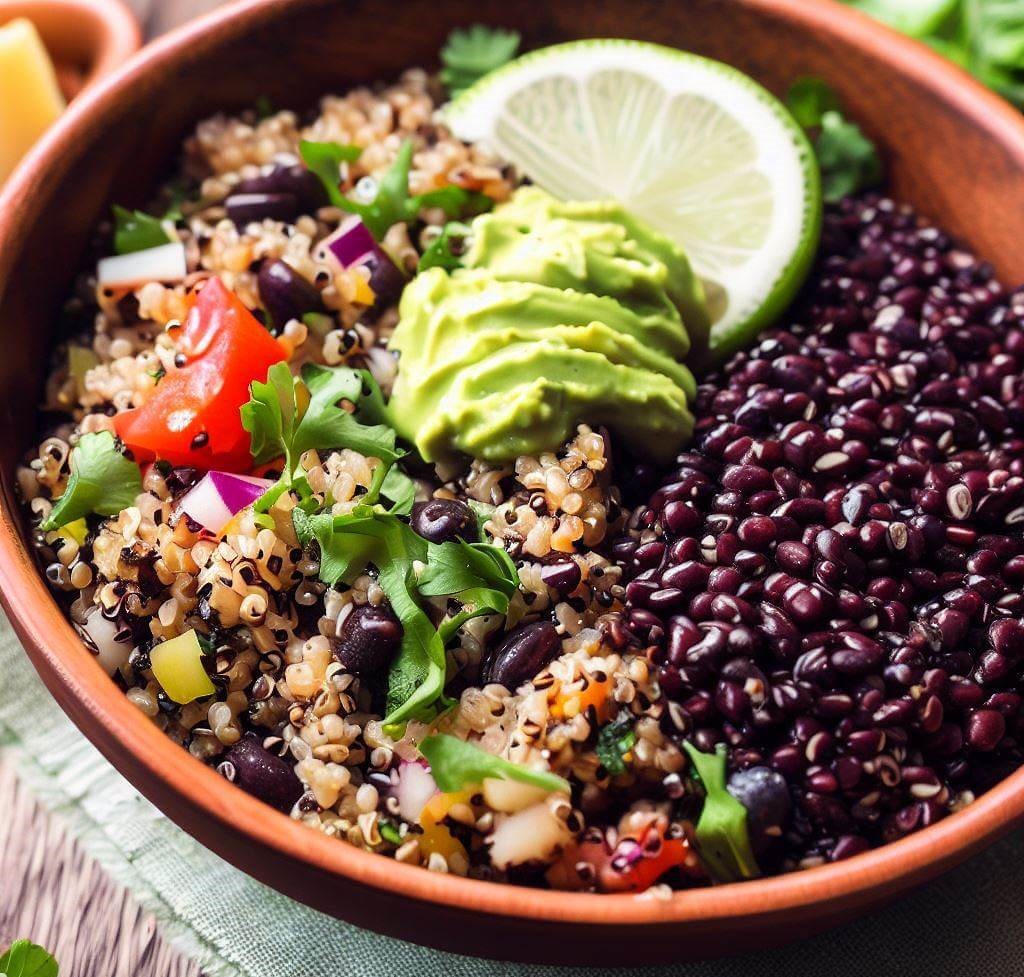
A Deep Dive: Quinoa is a complete protein and a fantastic grain for diabetics. Coupled with black beans, this bowl becomes a protein and fiber powerhouse.
Ingredients:
- Cooked Quinoa (1 cup): Offers a nutty flavor and rich in protein.
- Black Beans (1 cup): A great source of fiber and protein.
- Avocado: Sliced, for healthy fats.
- Corn, Red Onions, and Bell Peppers: Chopped for texture and added nutrition.
- Lime Dressing: Lime juice, olive oil, cumin, and a dash of agave nectar for a touch of sweetness.
Method:
- Mix quinoa and black beans in a bowl.
- Add the vegetables and combine well.
- Drizzle the dressing over the bowl and toss to mix.
- Top with avocado slices.
Recipe 6: Vegan Cauliflower Pizza Crust
A Deep Dive: Swapping the traditional pizza base for a cauliflower one drastically reduces the carb content, making it diabetic-friendly.

Ingredients:
- Cauliflower (1 head): Riced in a food processor.
- Flaxseed (2 tbsp): Acts as a binder and is a great source of Omega-3.
- Italian Seasoning, Salt, and Pepper: For flavor.
- Your choice of toppings: Consider vegan cheese, tomatoes, olives, bell peppers, and arugula.
Method:
- Steam the riced cauliflower. Once cooled, squeeze out excess water.
- Combine with flaxseed and seasonings to form a dough.
- Spread on a baking sheet and bake until golden.
- Add toppings and bake until vegan cheese is melted.
Recipe 7: Vegan Chia Seed Pudding
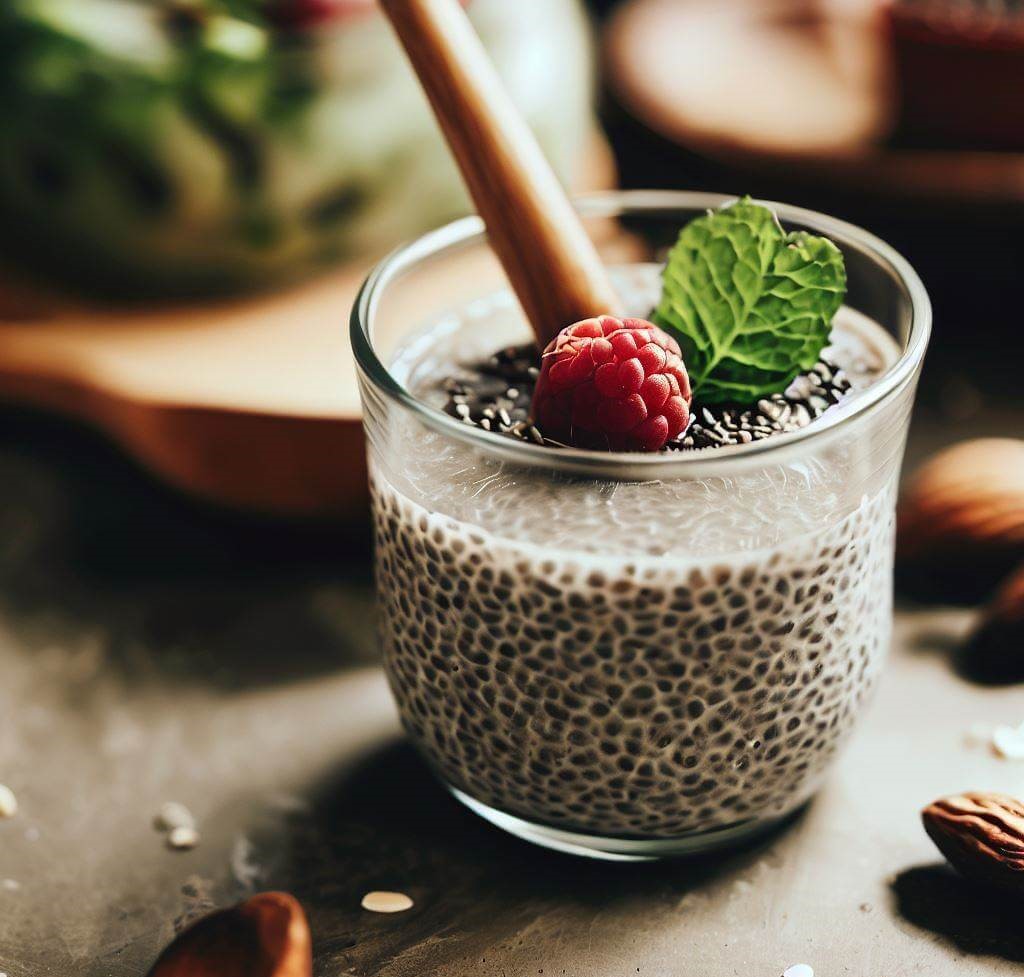
A Deep Dive: Chia seeds are an excellent source of Omega-3 fatty acids, fiber, and antioxidants. This pudding is not only delicious but is also a blood-sugar stabilizing treat.
Ingredients:
- Chia Seeds (1/4 cup): Packed with nutrients and has a gelatinous texture when soaked.
- Almond Milk (1 cup): You can also opt for other nut milks.
- Vanilla Extract and Cinnamon: For flavor.
- Berries: For a natural sweet touch and antioxidants.
Method:
- Mix chia seeds, almond milk, vanilla, and cinnamon. Allow it to sit in the fridge for 3-4 hours or overnight.
- Once set, top with a mix of your favorite berries.
- Enjoy as a breakfast or dessert.
The Benefits of These Vegan Recipes for Diabetics
A Nutrition-packed Journey: Vegan recipes often utilize a variety of plant-based foods. This ensures a broad spectrum of vitamins, minerals, and antioxidants in one’s diet. But how do these specific recipes benefit diabetics? Let’s delve deeper.
- Low Glycemic Index: Foods like zucchini, cauliflower, and quinoa have a lower glycemic index compared to their more traditional counterparts. This means they release sugar slowly into the bloodstream, preventing sudden spikes.
- High Fiber Content: Ingredients like chia seeds, black beans, and quinoa are rich in fiber. Fiber helps in slower absorption of sugars, aiding in blood sugar regulation.
- Healthy Fats: Avocado and chia seeds, prevalent in these recipes, offer omega-3 and omega-6 fatty acids. These healthy fats improve insulin sensitivity, an essential factor for diabetics.
- Natural Ingredients: By focusing on whole foods, these recipes avoid artificial additives and sugars that can be detrimental to blood sugar levels.
- Heart Health: Diabetics are at a higher risk of heart diseases. The incorporation of nuts, seeds, and vegetables can help in maintaining heart health due to their anti-inflammatory properties.
Tips for Transitioning to a Vegan Diabetic-Friendly Diet
Transitioning to a vegan diet can be a significant shift, especially when you’re also juggling diabetic considerations. But with a bit of planning and awareness, the process can be smooth and fulfilling. Here are some tailored tips for those eager to embark on this journey:
1. Start Gradually: Don’t feel pressured to change everything overnight. Begin by introducing one or two plant-based meals a week. This way, you can gradually acclimate to new flavors and textures while gauging how different foods impact your blood sugar.
2. Monitor Blood Sugar Closely: As with any dietary change, it’s vital to keep a close eye on your blood sugar levels. This helps in understanding how certain vegan foods or meals affect your diabetes.
3. Prioritize Low-Glycemic Foods: Not all plant-based foods have the same effect on blood sugar. Opt for low-glycemic index foods like quinoa, lentils, and most vegetables, as they cause a slower, more gradual rise in blood sugar.
4. Embrace Whole Foods: Processed vegan foods can be as detrimental as their non-vegan counterparts. Focus on whole foods and avoid vegan junk foods that can be high in sugars and unhealthy fats.
5. Supplement Wisely: Certain nutrients might be less abundant in vegan diets, such as Vitamin B12, Vitamin D, Omega-3, and Iron. Consider supplements after discussing with a healthcare provider.
6. Stay Hydrated: High fiber intake, a hallmark of vegan diets, requires ample hydration to ensure smooth digestion and aid in blood sugar regulation.
7. Educate Yourself: Knowledge is empowering. Read books, attend workshops, or join vegan diabetic communities online to share experiences, recipes, and advice.
8. Listen to Your Body: Everyone’s body is unique. What works for one person might not work for another. Always pay attention to how you feel, and don’t hesitate to tweak your diet based on your body’s signals.
9. Consult a Nutritionist: If you’re unsure about balancing the vegan and diabetic aspects of your diet, consult with a registered nutritionist. They can offer personalized advice, meal plans, and reassurance.
Making the switch to a vegan diabetic-friendly diet can be a positive step for both your health and the environment. With a bit of preparation and a commitment to understanding your body’s needs, you can reap the benefits and enjoy a vast array of delicious, health-promoting foods.
Conclusion: Navigating the Vegan, Diabetic-Friendly Path
Embarking on a dietary journey that supports diabetic health while aligning with vegan values may seem challenging. However, with the plethora of natural, wholesome ingredients available, crafting delightful and health-supportive meals becomes not just feasible, but also enjoyable. By embracing the recipes shared, diabetics can savor delicious meals without compromising their health. Remember, the essence lies in balance, variety, and an understanding of the impact of each ingredient on one’s health.
FAQs
- Are all vegan recipes suitable for diabetics?
Not necessarily. While vegan recipes exclude animal products, they can still contain high sugars or unhealthy fats. It’s essential to choose recipes mindful of a diabetic’s needs. - Can I add natural sweeteners like maple syrup to these recipes?
Yes, but sparingly. While natural sweeteners are better than refined sugars, they can still affect blood sugar levels. Always monitor your response. - Why is fiber important for diabetics?
Fiber slows the absorption of sugar and helps improve blood sugar levels. It’s also great for gut health. - Are there substitutes for quinoa in the recipes?
Absolutely! You can use bulgur, farro, or barley. However, always be mindful of the carbohydrate content and how it impacts your blood sugar. - How often should I incorporate these recipes into my diet?
It varies for every individual. It’s always best to consult with a nutritionist or healthcare provider to tailor a meal plan that suits your needs.
By choosing the right recipes and understanding the benefits of each ingredient, managing diabetes while enjoying scrumptious meals becomes an achievable goal.





